
MODULE 15 - POST-RUT & LATE-SEASON
CHAPTER 1: THE "AFTER-PARTY"

RANDY NEWBERG:
First off, I want to thank Corey for letting me be part of his University of Elk Hunting Online Course. If there’s anything that I feel I may be able to contribute, it’s the fact that I have a lot of experience in finding elk on public land. I’m not going to tell you I have a lot of experience necessarily killing elk, but I have spent a lot of time finding them and here’s why.
I get to hunt elk on 6-8 hunts a year. Between my tags and the tags of friends and guest hunters on my show, I get to hunt from Montana and Wyoming, and all the way down to Arizona and New Mexico. I have hunted the low desert country and the high alpine country. Through these opportunities, I get to see elk in a lot of different places. But no matter where I hunt, there’s one thing I’ve found that all areas have in common:
You cannot kill a bull elk until you find a bull elk!
That might seem super obvious – and it is – but that doesn’t mean it’s super easy. Finding mature bull elk on public land is one of the hardest things any hunter can do. I would be willing to bet that when I am hunting, I spend 90-95% of my time finding the elk, and then the other 5 or 10% of the time actually killing them.
So, it’s vital to think about how to build elk hunting knowledge that helps us understand where we’ll find elk in the period and/or season we’re hunting them in. And that’s what I’m going to cover in the video below. First though, I want to quickly explain my system for finding elk. I call it the 5 Periods of the Elk Calendar.
Within these 5 Periods, you have the Early-Season, the Pre-Rut, the Peak-Rut, the Post-Rut, and the Late-Season. And within each of the periods in this elk calendar, the elk have different needs. Understanding those needs is critical to understanding how to find elk in each of these periods.
First, here is how I categorize the seasons:
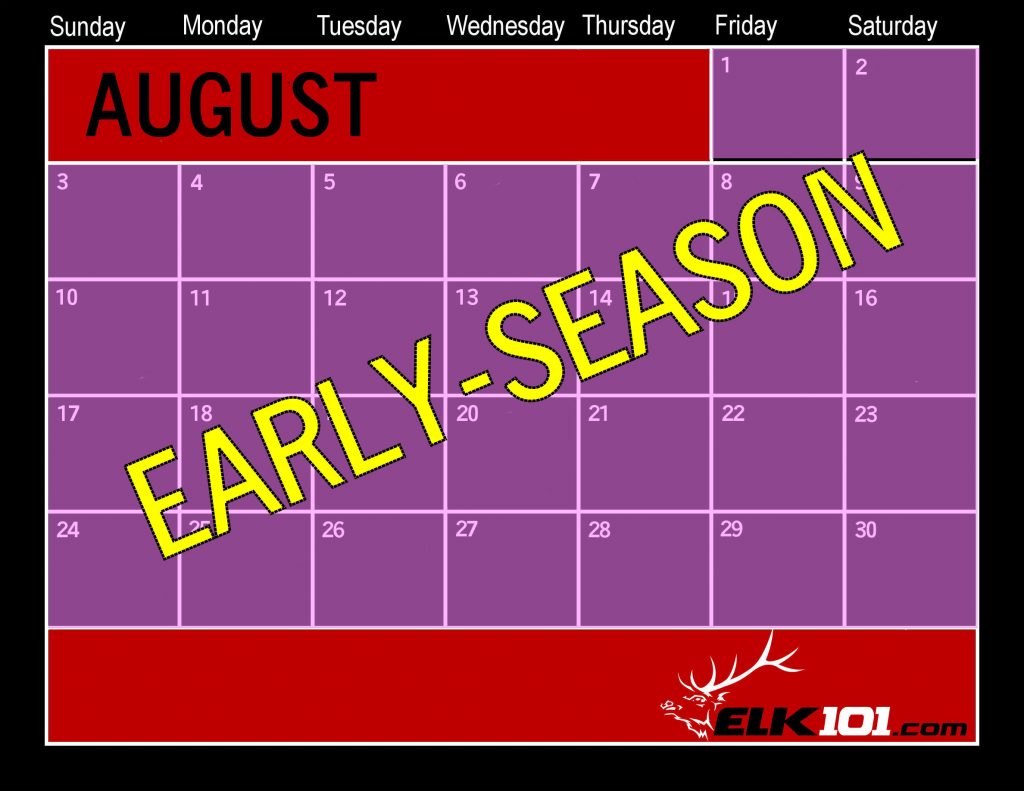
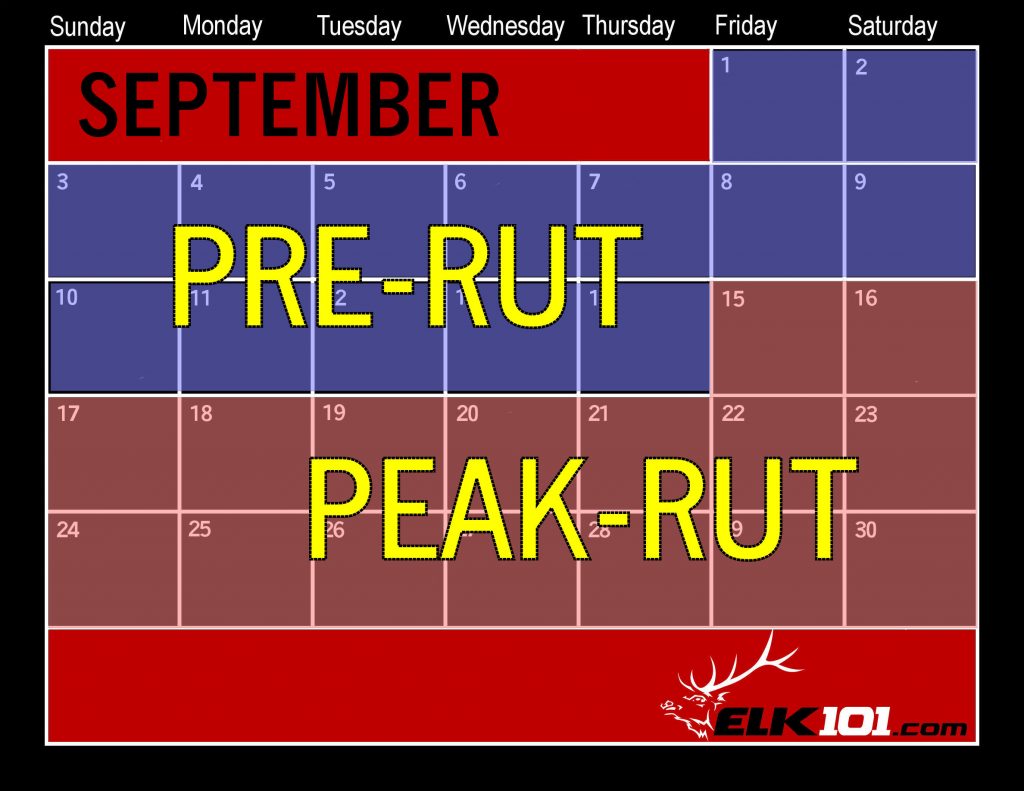
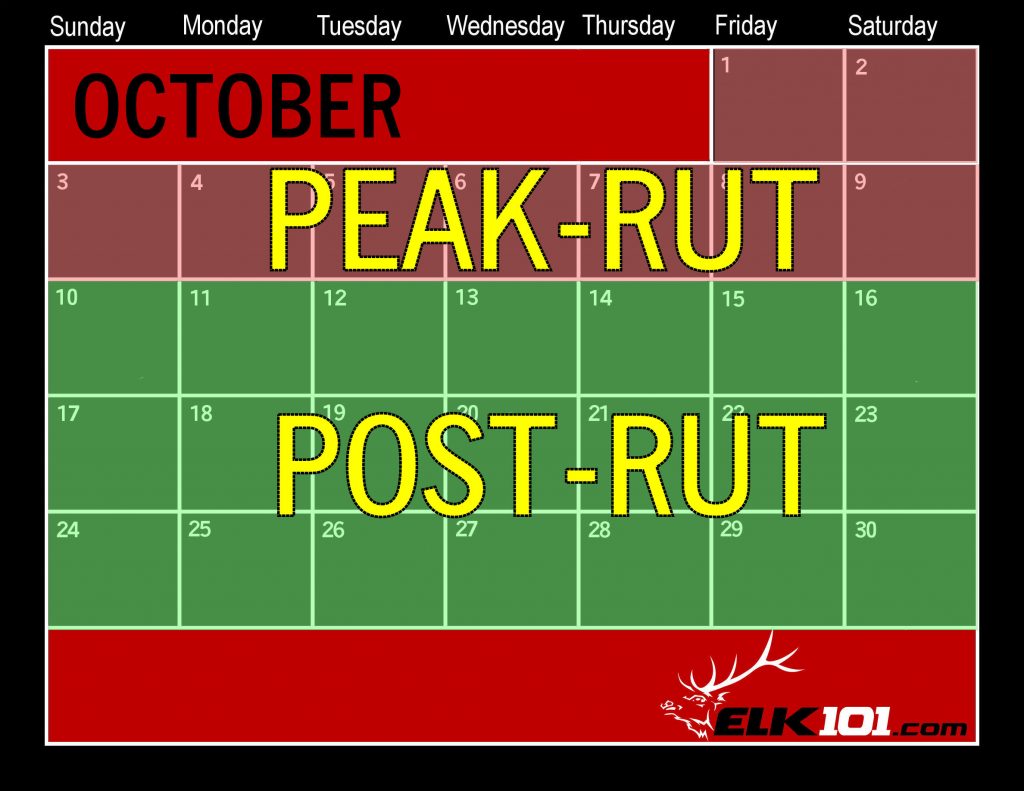
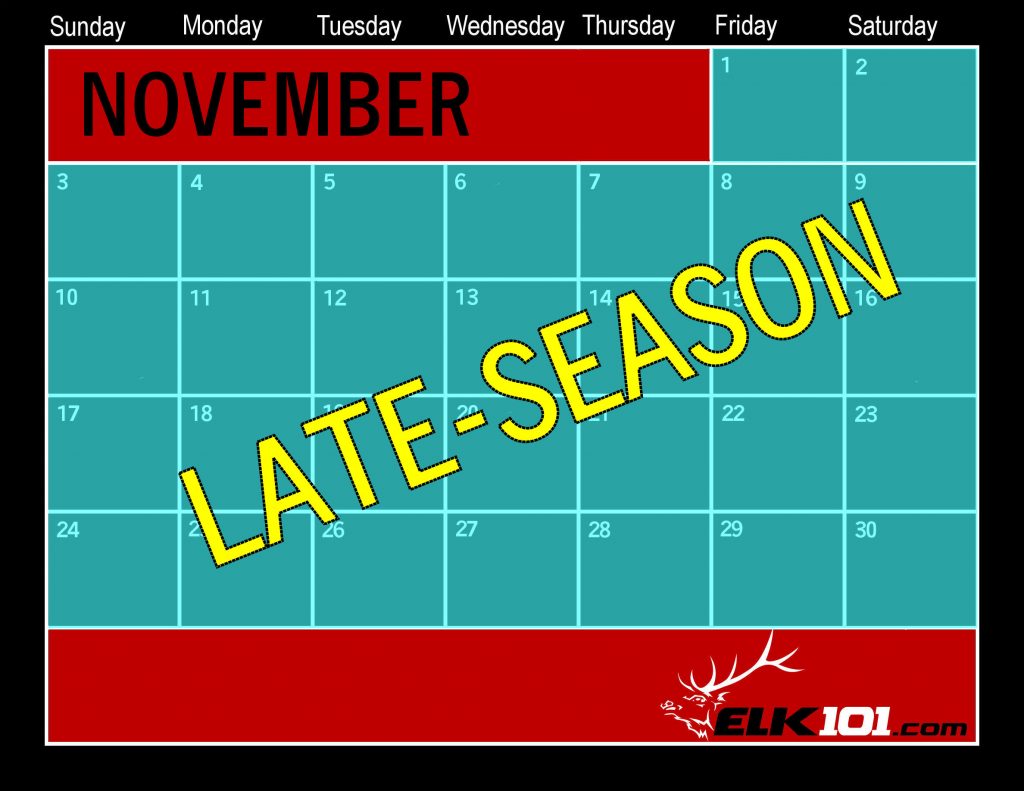
Remember that an elk doesn't care about what we have as a calendar. An elk is going to be doing things based upon their needs on that particular day. And elk have 4 primary needs. Three of their needs are permanent, and one is temporary or seasonal. The four basic needs that an elk has are:
- Water
- Food
- Security (or sanctuary)
- Breeding (seasonal)
Each of these needs might show up differently in terms of priority during different periods of the elk season, and understanding what needs are priorities in what seasons is critical to success. Let's take a look at the priority of those needs during each period.
Early-Season
1. Food
2. Water
3. Security (Sanctuary)
(Breeding is not a Priority Need)
Pre-Rut
1. Food
2. Water
3. Security (Sanctuary)
4. Breeding
Peak Rut
1- 50. Breeding!!!
51. Water
52. Food
53. Sanctuary
Post-Rut
1-30. Sanctuary!!!
31. Food
32. Water
(Breeding is not a Priority Need)
Late-Season
1-5. Sanctuary
6. Food
7. Water
(Breeding is not a Priority Need)
To summarize, you have to think about – and you have to understand - the elk’s needs during the season that you’re hunting. That is central to my whole system of finding elk. A mature bull elk on public land may be the hardest animal to find in the post-rut and late-season. However, once you find them, they may be one of the easiest to kill.
FINDING ELK IN THE POST-RUT
With a better understanding of the elk calendar and their needs in each period of the calendar, let’s talk about finding elk in the Post-Rut. This is the period after the rut is waning - it usually encompasses that time frame from October 10th or 15th, through the end of October. During the Post-Rut, you're going to find that the bulls who controlled the harems and did most of breeding are now moving off by themselves. They're moving off to find a place to hide and get through hunting season. They're going to find really small areas that have the three common features that they need during this period: Security, Food, and Water. These are going to be their Sanctuaries.
These Sanctuaries are going to be places where hunters don't want to travel, either because of the distance from a motorized trail, or because of the ugly, nastiness of blowdowns, deadfalls, or burns. These might be created by the sheer topography, like 400 feet of vertical hillside. There are just certain pieces of the landscape that elk learn that when they hang out there, they don't get bothered.
In these Sanctuaries, security is priority #1. But nearby, and without having to travel very far and expose themselves to the risk of hunters, the elk want water and a little bit of food. They will still forego food in this period somewhat (like they did in the rut), but security and water are key.
You're going to find elk in the most secluded places. That's why the Post-Rut elk seasons have such low success rates. The mature bull elk are not active at all. They are going to bed well before the sun comes up each morning, and they're usually not going to come out until after the sun goes down each evening.
The key to success during the Post-Rut lies in knowing where to find these sanctuary locations. And most of the time, you can find them by looking at a map.
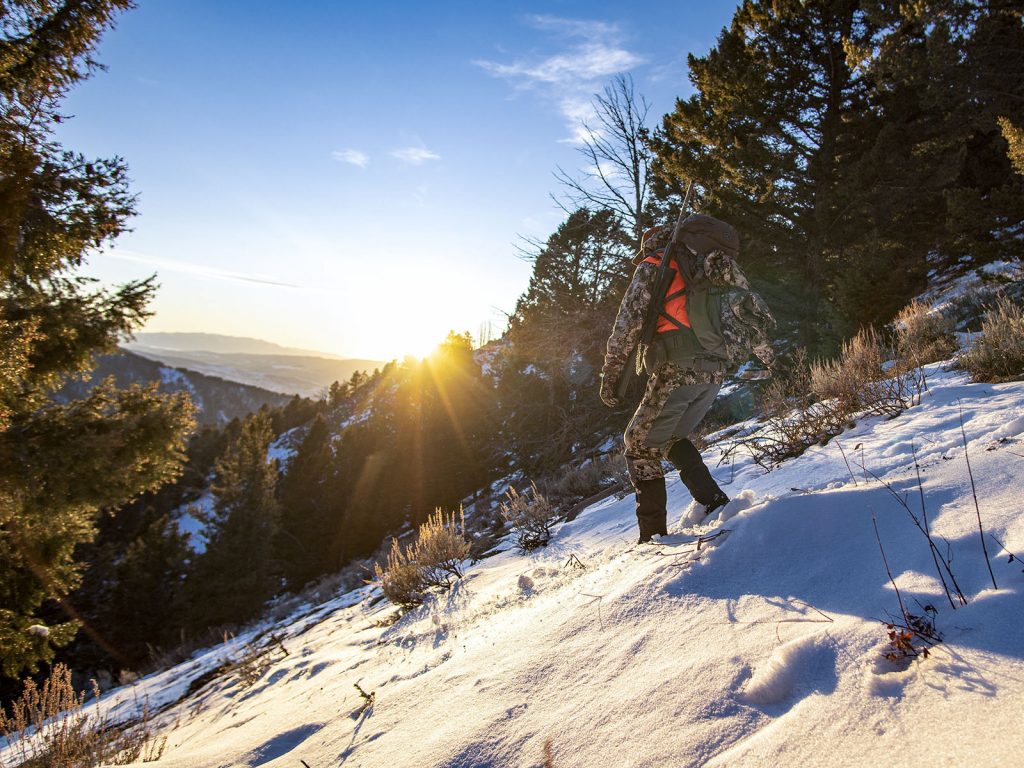
I can tell how far a certain area is from a road or a trail. That's the first feature I look for. Then, I look at the topography and the vegetation. Then, depending on where I’m hunting, I look for water sources. In Montana, Idaho, Colorado, etc., there is water in every drainage. But when you get down to Arizona and Nevada and New Mexico, there might be great sanctuaries, but the nearest water is five miles away. Well, you don't need to worry about those areas. The elk are not going to use them. They need sanctuaries that are close to their other needs of food and water. They know that the further they have to travel for food and water from their security, the greater the risk of getting shot. And the bulls that haven't figured that out by now are already out of the gene pool and in somebody's freezer!
The bulls we're looking for during this period know where the sanctuaries exist, and they will be found near or adjacent to food and water. So what do these Post-Rut Sanctuaries look like? Well, in the areas of the northern latitudes, these Sanctuaries usually involves steepness. They might be formed by blowdowns or burns….something ugly and nasty. The easiest way to find an elk Sanctuary is to look at the area and say to yourself, Boy, I sure wouldn’t want to pack an elk out of there! The odds are that you've probably found a sanctuary.
Once you understand what Sanctuaries are and what they look like in different areas, you’ll be able to look on your maps and identify multiple areas that are likely Sanctuaries. Then you can analyze those sanctuary areas and determine which ones are closest to the food and water. And these areas are going to be the places you'll find bull elk in the Post-Rut period.
FINDING ELK IN THE LATE-SEASON
Now I'm going to talk about a slightly different period - it's slightly different than the Post-Rut and I call it the Late-Season period. For me, the Late-Season is that time period from November 1st to however late your state allows you to hunt elk. And there are a few differences between the Late-Season and the Post-Rut that are worth pointing out.
In the Post-Rut, most of the bulls are going to be hanging out by themselves. They will usually be solo. By the time the Late-Season comes around, however, they're going to start building their bachelor groups. That might just be a pair of bulls, or it might be five or eight bulls. They are still going to be seeking security in similar areas that you would find them during the Post-Rut, but you’re going to start finding them in groups.
Another difference between the Post-Rut and the Late-Season is the fact that winter is just around the corner. That means the elk are going to be focusing on food more now. During a Late-Season elk hunt, a hunter has some more advantages, which explains why the success rates in Late-Season hunts are higher than they are in the Post-Rut period.
In the prior video, I focused on finding Sanctuaries in the Post-Rut. I mentioned that Sanctuaries could be created by distance, or by topography or the ugliness of the terrain or vegetation. In the Late-Season, you're still going to be looking for these areas, but these areas now have to have access to good food.
Because of their dependence on food in this Late-Season period, bull elk are going to be more visible during daylight hours. In the Post-Rut period, you might only get to see the elk for that first 20-30 minutes after legal shooting light, and they might not come out until there's only 10 or 20 minutes of legal shooting light left. Now, though, you will see them feeding for longer periods of daylight. Now they might be out for an hour or more after the sun comes up, and they might come out an hour or more before the end of legal shooting light. They have to. Additionally, you might see them get up out of their beds in the middle of the day to grab a little bit of food. To prepare to survive the upcoming winter, it requires them to be exposed to a little more hunter risk at this time of year.
One more thing that is important to mention as we talk about Sanctuaries for the Late-Season, is migration. Think about how the elk move across their range. In most areas, elk have a very defined summer area and a very defined winter area. Maybe it’s going from sub-alpine mountainous areas to low Canyonlands. Or, from a plateau or a mesa to low sage or pinion-juniper areas. There's usually at least some small migration from summer to winter range. And there are transition areas in between.
As a general rule of thumb, the sanctuary areas for elk are usually going to be closer to the summer range during the Post-Rut period (higher up the mountain or deeper in the canyon), and closer to their winter ranges during the Late-Season period. The odds are that these areas are going to have the best feeds during those times.
TACTICS FOR POST-RUT & LATE-SEASON
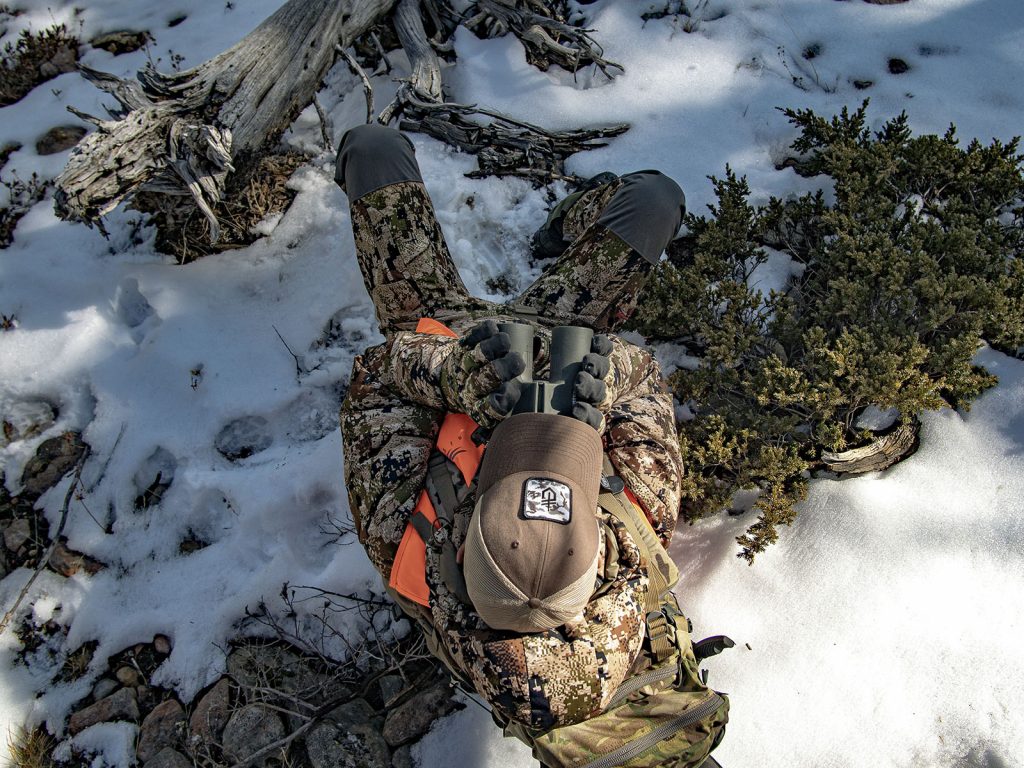
Once you’ve identified the Sanctuaries you know are going to hold elk, it’s important to identify areas where you can glass the Sanctuaries from. And if you can glass multiple Sanctuaries from one glassing location, even better. I know many elk hunters think it is boring to just sit and glass….but whatever. If you want to be successful during these periods, it's the most effective way.
Your two primary opportunities to spot elk during the Post-Rut and Late-Season are going to be right at daylight, and right at last light. If the elk get up in the middle of the day to grab a little bit of food or move to find shade, that's an opportunity as well, but your two key opportunities are going to be that first period in the morning and that last period in the evening. Do not get to your glassing spots late and don't leave them early.
If you leave your truck right at daylight, you're not going to be very successful in the Late-Season. You have to be comfortable hiking in with a headlamp, and being to your glassing location when legal shooting light comes. Let’s say you’ve identified four sanctuary areas that you're glassing from one spot. You’re likely going to spot a bull during that first half hour or hour of daylight. But you likely won’t be able to get to them and kill them that morning. However, you will know right where they are, and odds are that they're not going to move too much. Most of the time in the Late-Season, they're going to come back out in the same place in the evening and you’re going to be able to move in and be ready for them when they come back out.
Or the flipside of that, if you see them in the afternoon and you can't get there before dark, you can plan to be there where you saw them the next morning before the sun comes up. My point is this: you have to get there early and you have to be prepared to stay there all day. That makes for long days.
Another benefit you have during the Late-Season is weather, particularly snow. Many times, you won't see the elk, but you will see their sign. This will help you determine if the elk are still using this area, as well as whether the elk in the area are bulls or cows. For instance, if I see 30 elk tracks going across a big sagebrush face, I know these are most likely cows and young bulls. That’s too big of a group to be a bachelor herd. But if I spot three tracks going across a face a mile away, those are probably going to be bulls. Obviously, it’s not a sure thing, but it is more likely.
If those 3 tracks I spotted are lined out and covering country in a straight line, they're likely moving out of the area and heading to the winter range or somewhere close to it. But if the tracks are just meandering about and randomly moving around in an area, it is likely they are feeding and likely bedding down close by. And if I have snow and I see that sign in the snow, I am staying right there.
I’ll spend a ridiculous number of days in the exact same spot if I find a Sanctuary area and I’m able to determine that there are bulls in that area just feeding on a particular hillside. I know at some point they will stand up and make themselves visible, and I'm going to have a good chance of shooting one of them.
As you can see, there are a lot of factors that make the Late-Season a far more successful period for elk hunters. You have bulls in bachelor groups, so it's easier to spot two, three, or five bulls than it is to pick out a solo bull. The elk are moving more because of their need for feed. Plus, as the weather turns worse, you’ll likely have a little less hunting pressure.
SUMMARY
Now you know the five seasons of the Elk Calendar, as well as the 4 Primary Needs elk have during these 5 periods – specifically during the Post-Rut and Late-Season. Just remember, when you use this system, it’s critical to identify the period in which you're hunting, prioritize the needs in that period, and then find the areas where those needs could be satisfied. And that's where you're going to find the elk!





